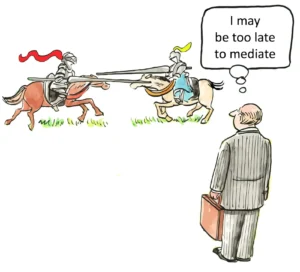Miranda Rights Explained: What They Mean for You
The Miranda rights are a fundamental aspect of the American criminal justice system, designed to protect individuals from self-incrimination during police interrogations. These rights, which stem from the landmark 1966 Supreme Court case Miranda v. Arizona, have become deeply ingrained in our legal culture and popular consciousness. Understanding the nature, scope, and application of Miranda rights is crucial for every citizen, as these protections play a vital role in safeguarding individual liberties and ensuring fair treatment under the law.
The core of the Miranda warning consists of four key elements: the right to remain silent, the warning that anything said can be used against the individual in court, the right to an attorney, and the provision of an attorney if the individual cannot afford one. These rights are rooted in the Fifth Amendment’s protection against self-incrimination and the Sixth Amendment’s guarantee of the right to counsel. The Miranda decision sought to address the inherent coerciveness of custodial interrogations and to ensure that suspects are aware of their constitutional rights before making potentially incriminating statements.
The circumstances that trigger the requirement for Miranda warnings are specific and nuanced. Law enforcement officers are obligated to provide these warnings only when a suspect is in custody and about to be interrogated. The determination of whether an individual is “in custody” for Miranda purposes is not always straightforward and has been the subject of numerous court decisions. Generally, a person is considered to be in custody when they are deprived of their freedom of action in any significant way, such that a reasonable person would not feel free to leave.
It is important to note that Miranda warnings are not required for all interactions with law enforcement. Routine traffic stops, for example, typically do not require Miranda warnings unless the situation escalates to a custodial interrogation. Similarly, voluntary statements made by individuals who are not in custody do not require prior Miranda warnings to be admissible in court. This distinction underscores the importance of understanding one’s rights and the context in which they apply.
The invocation of Miranda rights by a suspect has significant legal implications. Once an individual asserts their right to remain silent or requests an attorney, law enforcement must cease questioning immediately. Any subsequent attempts to interrogate the suspect without the presence of counsel are generally considered a violation of their Miranda rights. However, if a suspect voluntarily initiates further communication with law enforcement after invoking their rights, statements made during such interactions may be admissible.
The consequences of law enforcement’s failure to provide Miranda warnings can be substantial. Statements obtained in violation of Miranda are typically inadmissible as evidence in the prosecution’s case-in-chief. This exclusionary rule serves as a deterrent against police misconduct and helps ensure that confessions are obtained voluntarily and with full knowledge of one’s rights. However, it is crucial to understand that the failure to give Miranda warnings does not automatically result in the dismissal of charges or the suppression of all evidence in a case.
One of the most significant aspects of Miranda rights is their role in protecting vulnerable individuals from coercive interrogation techniques. Police interrogation methods can be psychologically manipulative and designed to elicit confessions, even from innocent suspects. The Miranda warnings serve as a crucial safeguard, reminding suspects of their right to remain silent and to have an attorney present during questioning. This protection is particularly important for juveniles, individuals with mental disabilities, and those who may be more susceptible to coercion or manipulation.
The scope of Miranda protections has been refined and, in some cases, limited by subsequent Supreme Court decisions. For example, in New York v. Quarles (1984), the Court established a “public safety” exception to the Miranda rule, allowing officers to question a suspect without providing Miranda warnings when there is an immediate threat to public safety. Similarly, in Berghuis v. Thompkins (2010), the Court held that suspects must unambiguously invoke their right to remain silent, and that merely remaining silent is not sufficient to invoke this right.
The application of Miranda rights in the context of terrorism investigations has been a subject of considerable debate. The tension between national security concerns and individual civil liberties has led to discussions about whether Miranda warnings should be modified or delayed in cases involving suspected terrorists. While the government has argued for greater flexibility in such cases, civil liberties advocates maintain that the protections afforded by Miranda are essential to preserving the integrity of the justice system, even in the face of serious threats.
The globalization of law enforcement efforts has raised questions about the applicability of Miranda rights in international contexts. When U.S. law enforcement agencies collaborate with foreign counterparts or conduct interrogations overseas, the extent to which Miranda protections apply can be complex. Courts have grappled with these issues, generally holding that Miranda warnings are required when U.S. law enforcement is substantially involved in overseas interrogations, but the specific requirements may vary depending on the circumstances.
The advent of technology has introduced new challenges in the application of Miranda rights. The use of body cameras by police officers has raised questions about how Miranda warnings should be documented and verified. Additionally, the increasing prevalence of digital evidence and the ability of law enforcement to access electronic communications have led to debates about whether Miranda warnings should be expanded to cover digital forms of self-incrimination.
The effectiveness of Miranda warnings in practice has been the subject of numerous studies. Research has shown that many individuals, particularly those with limited education or cognitive impairments, may not fully understand the meaning and implications of Miranda warnings. This has led to calls for simplifying the language used in Miranda warnings and for developing standardized procedures to ensure that suspects comprehend their rights before waiving them.
The right to counsel, as articulated in Miranda, has been further developed in subsequent cases. In Edwards v. Arizona (1981), the Supreme Court established that once a suspect invokes their right to counsel, police must cease interrogation until counsel is present, unless the suspect initiates further communication. This “Edwards rule” provides strong protection against police attempts to circumvent a suspect’s request for an attorney.
The interaction between Miranda rights and plea bargaining is an important consideration in the criminal justice system. Critics argue that the threat of introducing incriminating statements obtained in violation of Miranda can be used as leverage in plea negotiations, potentially undermining the protections afforded by the warnings. This highlights the complex relationship between Miranda rights and other aspects of criminal procedure.
The role of Miranda warnings in popular culture cannot be overstated. Television shows and movies have made the recitation of Miranda rights a familiar scene, often dramatized for effect. While this has increased public awareness of these rights, it has also led to misconceptions about when and how they apply. Legal experts stress the importance of distinguishing between fictional portrayals and the actual legal requirements and implications of Miranda warnings.
The impact of Miranda on confession rates and law enforcement practices has been a subject of ongoing debate. Some argue that Miranda has hampered police investigations and led to a decrease in confessions. Others contend that law enforcement agencies have adapted their techniques to work within the Miranda framework, developing more sophisticated and less coercive interrogation methods. Empirical studies on this issue have produced mixed results, highlighting the complexity of assessing Miranda’s long-term effects on criminal justice outcomes.
The application of Miranda rights to juvenile suspects presents unique challenges. Courts have recognized that juveniles may be more vulnerable to coercion and less capable of understanding their rights than adults. As a result, some jurisdictions have adopted special procedures for administering Miranda warnings to minors, such as requiring the presence of a parent or guardian during interrogations. The Supreme Court has also held that a juvenile’s age must be considered when determining whether they are in custody for Miranda purposes.
The intersection of Miranda rights and mental health issues is another area of significant concern. Individuals with mental illnesses or cognitive impairments may have difficulty understanding or asserting their Miranda rights. Courts have grappled with how to ensure that these vulnerable populations are adequately protected during police interrogations. Some jurisdictions have implemented additional safeguards, such as requiring the presence of a mental health professional during questioning of suspects with known mental health issues.
The role of Miranda warnings in domestic violence cases has been the subject of particular scrutiny. The dynamics of domestic violence situations often involve complex emotional and psychological factors that can affect a victim’s willingness to cooperate with law enforcement. Some argue that the immediate provision of Miranda warnings in domestic violence calls may discourage victims from providing crucial information. This has led to debates about how to balance the need for Miranda protections with the imperative of effectively addressing domestic violence.
The application of Miranda rights in the context of drunk driving investigations has raised specific legal questions. Field sobriety tests and breathalyzer examinations present unique challenges in determining when a suspect is considered to be in custody for Miranda purposes. Courts have generally held that routine roadside questioning and field sobriety tests do not require Miranda warnings, but the line between investigative detention and custodial interrogation can be blurry in DUI cases.
The interaction between Miranda rights and immigration enforcement has become increasingly relevant in recent years. Non-citizens may face additional vulnerabilities during police interrogations, particularly if they are concerned about their immigration status. Courts have generally held that Miranda rights apply to non-citizens in the same way they do to citizens, but language barriers and fear of deportation can complicate the effective exercise of these rights.
The use of pre-Miranda silence as evidence in criminal trials has been a contentious issue. While post-Miranda silence cannot generally be used against a defendant, the Supreme Court has held that pre-arrest silence, or silence before Miranda warnings are given, may be admissible as evidence of guilt in some circumstances. This distinction highlights the importance of understanding when Miranda protections begin to apply.
The role of Miranda warnings in white-collar crime investigations presents unique challenges. These cases often involve complex financial transactions and extensive documentary evidence. The point at which a subject of a white-collar investigation is considered to be in custody for Miranda purposes can be less clear-cut than in traditional street crime scenarios. Additionally, the sophisticated nature of many white-collar defendants has led to debates about whether the traditional Miranda warnings are sufficient in these contexts.
The application of Miranda rights in the context of school-based interrogations has been the subject of legal scrutiny. Courts have grappled with whether school officials acting in conjunction with law enforcement are required to provide Miranda warnings to students during on-campus questioning. The balance between maintaining school safety and protecting students’ constitutional rights remains a complex issue in this area.
The interaction between Miranda rights and eyewitness identification procedures is another area of ongoing legal development. While Miranda primarily addresses custodial interrogations, the principles underlying these protections have influenced discussions about the reliability of eyewitness identifications and the potential for suggestive police practices. Some jurisdictions have implemented additional safeguards in eyewitness identification procedures, drawing on the spirit of Miranda’s protections against self-incrimination.
The role of Miranda warnings in cold case investigations presents unique challenges. Advances in forensic technology have led to the reopening of many long-dormant cases, raising questions about how to apply Miranda protections to interrogations conducted years or even decades after the initial investigation. Courts have had to consider factors such as the continuity of custody and the applicability of Miranda to suspects who may have been previously questioned without warnings.
The impact of Miranda on police training and procedures has been significant. Law enforcement agencies have developed extensive protocols for administering Miranda warnings and conducting custodial interrogations in compliance with legal requirements. This has led to the professionalization of interrogation techniques and a greater emphasis on obtaining voluntary confessions that can withstand legal scrutiny.
The role of Miranda rights in plea bargaining and sentencing has been the subject of legal debate. While Miranda primarily addresses the admissibility of statements at trial, the shadow of Miranda extends to earlier stages of the criminal justice process. The threat of introducing statements obtained in violation of Miranda can influence plea negotiations, and courts have had to consider how to handle such statements in sentencing proceedings.
The application of Miranda principles to emerging technologies continues to evolve. As law enforcement increasingly relies on digital evidence and electronic surveillance, questions arise about how Miranda protections apply to data stored on smartphones, social media accounts, and other digital platforms. The concept of “digital custody” and the point at which Miranda warnings are required in investigations involving electronic communications remain areas of legal development.
The interaction between Miranda rights and international law enforcement cooperation presents complex legal issues. As criminal investigations increasingly cross national borders, questions arise about the applicability of Miranda warnings in joint operations involving U.S. and foreign law enforcement agencies. Courts have had to consider factors such as the degree of U.S. involvement and the expectations of privacy in different jurisdictions when determining whether Miranda warnings are required in these contexts.
In conclusion, the Miranda rights remain a cornerstone of American criminal procedure, serving as a vital safeguard against coerced self-incrimination and ensuring that individuals are aware of their constitutional protections during police interrogations. While the core principles established in Miranda v. Arizona have endured, their application continues to evolve in response to changing social, technological, and legal landscapes. As the criminal justice system faces new challenges, the balance between effective law enforcement and the protection of individual rights remains a critical consideration in the ongoing interpretation and application of Miranda rights.
- https://www.law.cornell.edu/wex/miranda_warning
- https://www.nolo.com/legal-encyclopedia/police-questioning-miranda-warnings-29930.html
- https://www.supremecourt.gov/opinions/21pdf/21-499_gfbh.pdf
- https://www.americanbar.org/groups/criminal_justice/publications/criminal_justice_section_archive/crimjust_standards_mirandawarnings/













